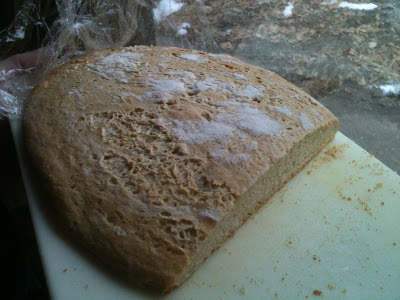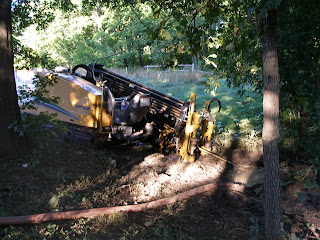Integrated Forest Gardening
Online Catalog & Media Site
The Complete Guide to Polycultures and Plant Guilds in Permaculture Systems
By Wayne Weiseman, Dan Halsey and Bryce RuddockPub Date: August 2014
Permaculture is a movement that is coming into its own, and the concept of creating plant guilds in permaculture is at the forefront of every farmer’s and gardener’s practice. One of the essential practices of permaculture is to develop perennial agricultural systems that thrive over several decades without expensive and harmful inputs: perennial plant guilds, food forests, agroforestry, and mixed animal and woody species polycultures.
The massive degradation of conventional agriculture and the environmental havoc it creates has never been as all pervasive in terms of scale, so it has become a global necessity to further the understanding of a comprehensive design and planning system such as permaculture that works with nature, not against it. The guild concept often used is one of a “functional relationship” between plants—beneficial groupings of plants that share functions in order to bring health and stability to a plant regime and create an abundant yield for our utilization. In other words, it is the integration of species that creates a balanced, healthy, and thriving ecosystem. But it goes beyond integration. A guild is a metaphor for all walks of life, most importantly a group of people working together to craft works of balance, beauty, and utility.
This book is the first, and most comprehensive, guide about plant guilds ever written, and covers in detail both what guilds are and how to design and construct them, complete with extensive color photography and design illustrations. Included is information on:
• What we can observe about natural plant guilds in the wild and the importance of observation;
• Detailed research on the structure of plant guilds, and a portrait of an oak tree (a guild unto itself);
• Animal interactions with plant guilds;
• Steps to guild design, construction, and dynamics: from assessment to design to implementation;
• Fifteen detailed plant guilds, five each from the three authors based on their unique perspectives;
• Guild project management: budgets, implementation, management, and maintenance.
Readers of any scale will benefit from this book, from permaculture
designers and professional growers, to backyard growers new to the
concept of permaculture. Books on permaculture cover this topic, but
never in enough depth to be replicable in a serious way. Finally, it’s
here!• Detailed research on the structure of plant guilds, and a portrait of an oak tree (a guild unto itself);
• Animal interactions with plant guilds;
• Steps to guild design, construction, and dynamics: from assessment to design to implementation;
• Fifteen detailed plant guilds, five each from the three authors based on their unique perspectives;
• Guild project management: budgets, implementation, management, and maintenance.
Read praise for this book
About the Author
Wayne Weiseman is certified by the Permaculture Institute of Australia and the Worldwide Permaculture Network as an instructor of the Permaculture Design Certificate Course. He is the director of Kinstone Academy of Applied Permaculture (KAAP) in Fountain City, Wisconsin, the Permaculture Project LLC, and the Permaculture Design-Build Collaborative LLC, full- service, international consulting and educational businesses promoting the ideas of eco-agriculture, renewable energy resources, and eco-construction methods. For many years he managed a land-based, self-reliant community project combining organic crop/food production, ecologically built shelters, renewable energy, and appropriate technologies.
Daniel Halsey is a certified permaculture designer and teacher for the Permaculture Research Institute. Certified by the Permaculture Research Institute, Dan travels nationally and internationally teaching permaculture and ecological design to permaculture design certification students, homesteaders, and landscape designers.
Dan and his wife Ginny manage self-sustaining forest gardens of fruiting trees, shrubs and nut crops at SouthWoods Forest Gardens, a permaculture design, demonstration, and educational site located on a twenty-five-acre wetland savannah in Prior Lake, Minnesota.
Bryce Ruddock is certified as an instructor of permaculture teaching by the Permaculture Institute USA and Cascadia Permaculture Institute since 2010. He authored the Plant Guilds e-book, a training manual used in classes by Midwest Permaculture. His interest in perennial polycultures began in 1980. Since 1984 Bryce and his partner, Debby, have been implementing permaculture-based polyculture designs at their sixth of an acre urban home site in southeastern Wisconsin, where they have transformed an average suburban yard into a thriving food and medicinals food forest.
ISBN: 9781603584975
Year Added to Catalog: 2014
Book Format: Paperback
Book Art: Full color photographs and design illustrations throughout
Dimensions: 8 x 10
Number of Pages: 416
Book Publisher: Chelsea Green
Pub Date: August 2014
Retail Price: US $45.00
Category: Gardening & Agriculture
Media Inquiries: Shay Totten 802.295.6300 x125
Events: Jenna Stewart 802.295.6300 x120
Review Copy Requests: Lettie Stratton
Events: Jenna Stewart 802.295.6300 x120
Review Copy Requests: Lettie Stratton


Comments